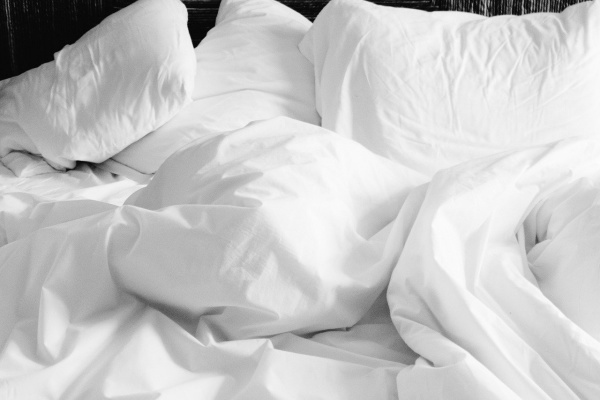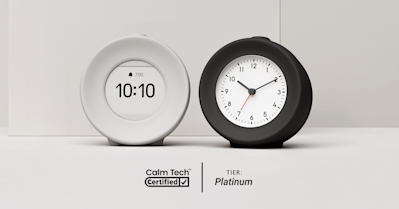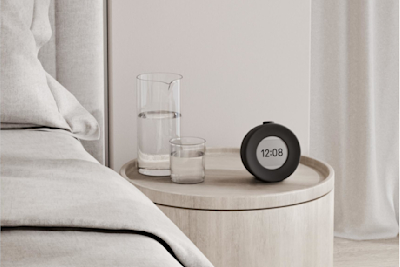
Healthy Sleeping Tips: A Simple Guide to Better Sleep
Healthy Sleep Tips: How to improve the quality of your sleep.
Good sleep depends on something called sleep hygiene. Finding the right habits to suit your lifestyle will help you fall asleep quickly and wake up with more energy.
Do you use your mobile phone before going to sleep? Is aimlessly scrolling through Twitter, Instagram or Facebook posts part of your late night routine? If the answer to either of these questions is yes, then you should probably stop. We know it’s easier said than done but looking at a device which emits a lot of blue light before you go to sleep is undoubtedly not healthy.
Turning the brightness down or switching your phone to a black and white mode can help, as well as using an app like F.lux, however it won’t necessarily improve your sleep. Exposure to blue light causes reactions in the brain that disturb our circadian rhythm. It may reduce the secretion of melatonin, which sends a signal to the brain that it’s still daytime. The best solution is to simply give up using electronics with LCD screens for at least two hours before bedtime. If it’s your favorite time to read, try to use an e-book reader with an E Ink display or go old school, read a physical paper based book! If you use your smartphone as an alarm clock, consider buying a conventional alarm clock, or perhaps invest in good sleep with a premium minimalist alarm clock, such as the Mudita Harmony.
Why is sleep so important and how much sleep is enough?
Sleep is a major part of our lives. It supports our body, it enables us to continue functioning. It affects our emotional balance, creativity, concentration, immune system and much more!
Of course, this varies from person to person but if you’re an adult it’s recommended you sleep between 7 to 9 hours per night . Children and teenagers need around 9–10 hours of sleep. If you feel awake and energetic during the day it’s a sign that you’ve had enough sleep. Fatigue, moodiness, depression, difficulties in dealing with stress and emotions or premature skin ageing are some of the symptoms of sleep deprivation.
Quality over quantity
The length of sleep you get in hours isn’t the only thing that matters. The quality of your sleep at different phases makes a huge difference to how you’ll feel in the morning. The most important phase is deep or REM (Rapid Eye Movement) sleep. During this phase, our body regenerates and regains energy.
What can you do to get a deeper sleep during the night? The best ideas usually involve giving up alcohol, quitting smoking and staying away from any noise or light pollution during the night. It’s also advisable to sleep an extra 30 minutes in the morning as it should make your REM sleep phase last longer. Sticking to a regular sleep schedule, regular exercise, avoiding caffeine and food containing sugar as well as keeping your bedroom dark will help too.
Don’t forget to prepare your bed
If you want to sleep soundly and efficiently, a properly selected mattress is essential. While selecting the mattress, you should take into account the individual characteristics of the person that will sleep on it, especially his/her weight and any potential health problems. It’s important to remember that the mattress should be neither too soft nor too hard. It should also accommodate the body pressure while maintaining the spine in an optimal position. This will prevent unnecessary muscle and spine soreness and significantly increase the comfort of sleep overall.
You might also consider buying an orthopedic pillow that will support the cervical spine and neck muscles. It’s a great solution, especially for those who suffer from whiplash pain, numbness etc. as well as for those who have trouble getting to sleep.
Pranayama — another way to fall asleep quickly
The yoga technique Pranayama is very simple and doesn’t require any skills or preparation. You just have to lie on the right side of your body and close your right nostril with a finger. Take long, calm breaths through the left nostril. Remember to alternate your nostril breathing. This exercise allows you to oxygenate the left hemisphere of the brain, which in turn makes you calm, relaxed and makes falling asleep a lot easier.
You can also try another kind of mediation, Yoga Nidra. Its purpose is to enter a state of deep relaxation. If you have trouble sleeping, you should practice it before going to bed.
Check out this video if you’d like to try it out:
Yoga Nidra for rest & relaxation
Good luck and sleep tight!
If you’d like to read more about topics connected to this subject, please check out some of our other articles published on our blog:
What methods do you use to sleep better? Have you tried any of the methods we’ve mentioned? Please feel free to leave a comment below
If you enjoyed reading this article, please share and recommend it!
Related stories

Mudita’s Mindful Alarm Clocks Are Calm Tech Certified™
Wake up refreshed with Bell 2 & Harmony 2. Both are Platinum Tier Calm Tech Certified™, helping you start and end each day with less stress and more presence.

How Technology Affects Our Minds
Discover how technology affects our minds and learn mindful ways to restore balance, focus, and presence with tools that respect your attention.

Why an E Ink Alarm Clock Is the Best Mother’s Day Gift
This Mother's Day, gift better sleep with an elegant E Ink alarm clock, like Mudita Harmony, featuring nature sounds for restful nights and gentle mornings.
If you'd like to receive the best stories from our blog, keep up to date with our progress and get notified about our product releases and special discounts.